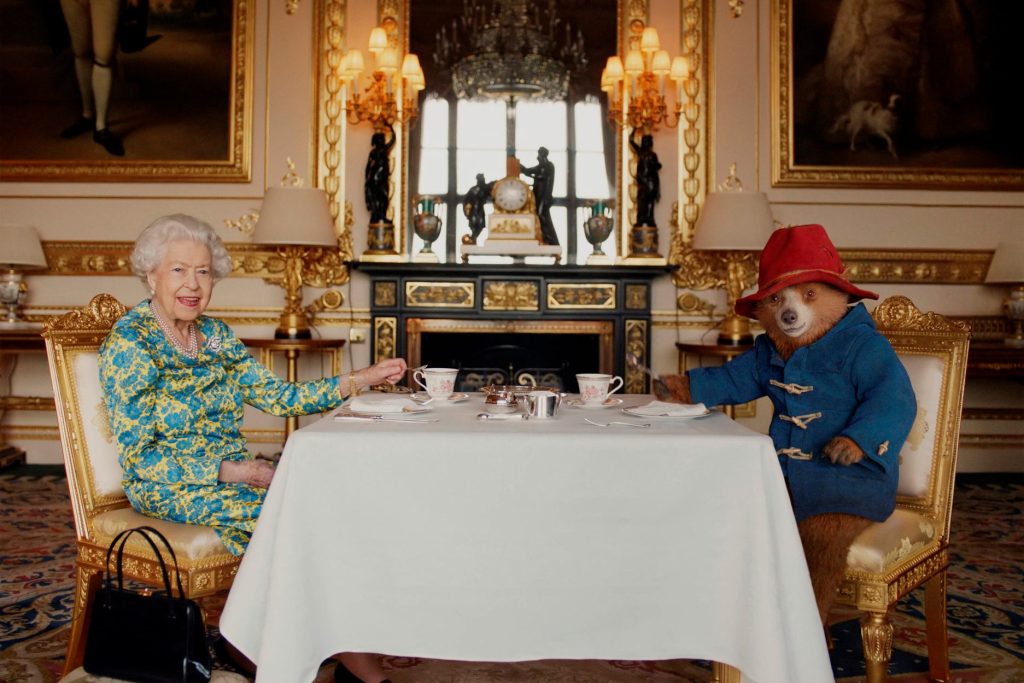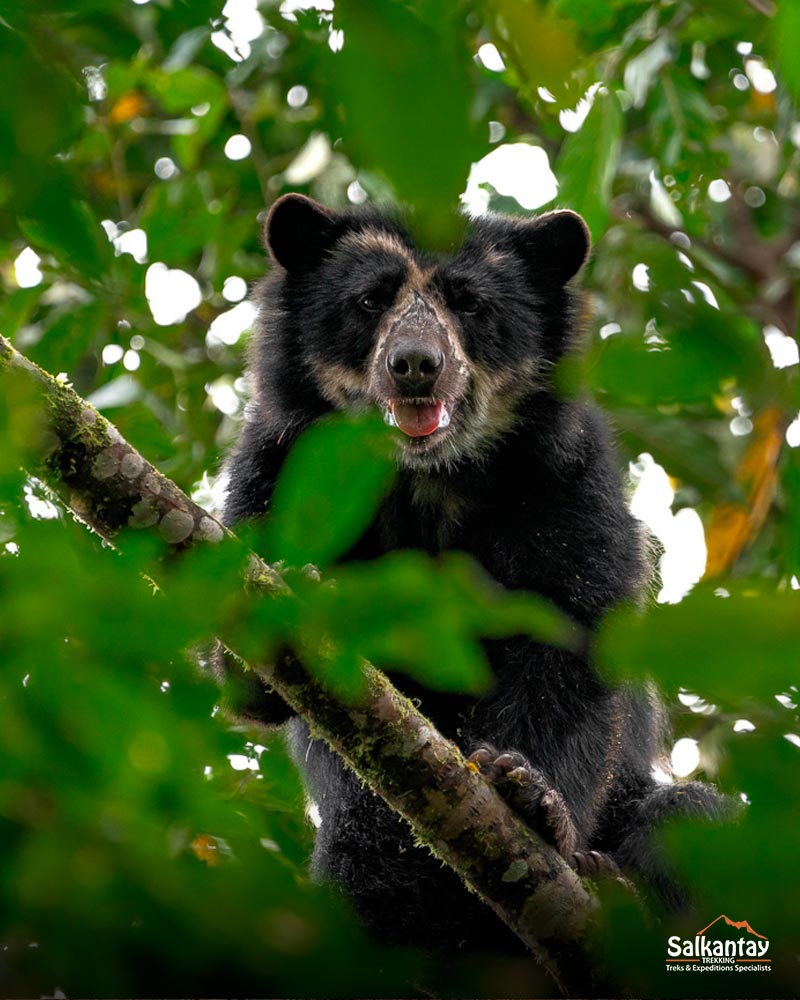Paddington returns to the big screen! That’s right, the most famous bear in cinema is coming back to show us his great adventure in Peru. This new film, set to premiere in theaters in January 2025, explores Paddington’s origins. The beloved character embarks on a journey to his homeland, traveling across the country to find his family and learn more about his past. An adventure that will lead him to reveal the deepest secrets of our ancestors and reconnect with his roots.
This is the third part of the saga, released after six years of anticipation. The production includes footage shot in iconic locations in Lima and Cusco, showcasing the richness and diversity of Peru’s landscapes. Thanks to this, millions of people around the world will be able to discover the beautiful scenery and incredible history our country has to offer, as well as learn about a unique species native to our region: the spectacled bear!
Read the full article to learn everything about the movie and this beautiful animal that won the audience’s hearts.
1. The Story of Paddington: How Did He Arrive in England?
The film’s original story comes from the 1958 book A Bear Called Paddington, written by the English author Michael Bond. To create the character, Bond was inspired by a teddy bear he saw in a shop at Paddington Station in London, which he bought and gave to his wife. At that moment, the little bear became a member of the family, and Bond had the idea to turn this event into a beautiful story of solidarity with those who come from afar, integrating them into the community.
Initially, the author considered Africa to be the protagonist’s place of origin, but after doing some research, he realized that there were no bears on that continent. He dismissed other possibilities and chose Peru, where the almost unknown spectacled bear exists. He liked this detail, as it added an extra layer of mystery to the story.
In the book, the bear Paddington is introduced as a foreigner from the “darkest Peru.” After the death of his parents in an earthquake, his Aunt Lucy sends him to England via postal service. This is how he unexpectedly appears in the store where Mr. and Mrs. Brown work. Paddington, dressed in his signature blue duffle coat, red boots, and red hat, also wore a tag around his neck with the message, “Please look after this bear. Thank you.” In this way, the family welcomes him as one of their own and helps him adjust to his new life in London.

2. Paddington and His Big Leap to Fame
Over the years, the story became a landmark of children’s literature in the United Kingdom, so it’s no surprise that the first films were box office hits. Together, they raised over $500 million and received nominations for the BAFTA Awards. The tale has also been adapted into television with a series and into theater with a musical.
Paddington has earned the public’s affection through his courtesy, charming clumsiness, and charismatic personality. He has become one of the most beloved British fictional characters and is widely recognized in English popular culture. He has made significant appearances in advertisements, parades, and television programs, including the video celebrating Queen Elizabeth II’s Platinum Jubilee, which he starred in alongside the monarch. The character has also gained fame in Peru. The strong bond between the bear and our country led to the construction of a statue in his honor in Lima, in the Miraflores district, inaugurated in 2015 by the creator’s daughter.
The great success of Paddington and the films based on his story are helping to put Peru on the international map. More and more people are realizing the potential of this rich and diverse country and are becoming interested in exploring it. We have an enormous variety of landscapes, a unique historical legacy, and a vibrant culture that we are proud to show and share with the rest of the world. Thanks to these kinds of opportunities, it’s possible to showcase and appreciate what we have in Peru.

3. The spectacled bear, the true protagonist
Behind the famous Paddington, there’s the actual protagonist who inspired the character: the spectacled bear. Also known as the Andean bear or ukumari in Quechua, it’s the only bear species in all of South America, and the largest population is located in Peru.
Peru has a high territorial complexity: mountains, valleys, deserts, forests, jungles, canyons, and glaciers, each with varied climates. This creates excellent biodiversity in our country, where native species that can only be found here abound, such as the spectacled bear. It is characterized by the white markings around its eyes, which stand out against its black fur and originated its playful name. Although it’s endemic to the tropical Andes, it can also be found in desert areas, dry forests, and páramos, inhabiting a wide range of altitudes from 800m/2.625ft to 4750m/13.369 ft.
This beautiful bear not only represents Peru’s incredible wildlife but is also an essential figure in the Andean and Amazonian worldview, regarded as a sacred animal with supernatural powers. The ukumari was seen as a mediator between the worlds of the living and the dead, and it was believed to have the ability to heal, purify souls, and make livestock thrive.
Would you like to learn more about this iconic species of Peru? Here’s some information you can’t miss.


An Essential Species for the Ecosystem
The Andean bear has been nicknamed the “architect of the forests” due to its extraordinary adaptability. By survival instinct, it has managed to adjust to multiple climatic conditions, being both terrestrial and arboreal to obtain food from different sources and maintain a varied diet. It can live in humid forests, dry coastal areas, high mountains, and many other places. In Peru, it has been found in Lambayeque, Piura, Cajamarca, Amazonas, San Martín, and other regions. However, it is much more commonly seen wandering around the Machu Picchu Historic Sanctuary (Cusco) and the Abiseo River National Park (San Martín and La Libertad).

Thanks to its numerous habitats and diverse feeding habits, the spectacled bear has become a vital element of the Peruvian ecosystem. In addition to being omnivorous and occasionally consuming meat, the spectacled bear’s diet is 75% plants, fruits, and tender shoots. This positions it as a critical pillar in the Peruvian territory’s ecological balance and natural order, both for its role as a predator and for spreading seeds carried in its fur across various natural environments.
Currently, the spectacled bear is at risk as a vulnerable species facing major threats, including hunting, deforestation, and climate change. The lack of knowledge about the Andean bear represents another danger, as it hinders the implementation of the necessary measures to protect it effectively.
We hope this level of visibility in prominent media, like cinema, will help raise public awareness and boost protective measures for this species.
Paddington still has many adventures to live!
4. Locations featured in the film.
The film, directed by Dougal Wilson, has received support from both public and private institutions for its production. Film In Peru collaborated on the project to properly contextualize the storyline and accurately represent Peru’s culture, history, and natural environment.
This platform is part of PROMPERU, an organization responsible for promoting the use of national locations in all types of audiovisual productions. In recent years, Film In Peru has been involved in successful international productions such as Dora and the Lost City, Transformers: Rise of the Beasts, and Until We Meet Again, among others.


For this occasion, significant locations in both Lima and Cusco were chosen. In the capital, the filming took place in the historic center, the Plaza Mayor, and the Miraflores district. Of course, the most important monuments in the Cusco region were also featured, such as the Machu Picchu Historic Sanctuary and Huayna Picchu Mountain. It’s worth mentioning that throughout the process, the Ministry of Culture of Peru ensured adherence to safety regulations to guarantee the proper care of the monuments and natural spaces. Promoting our region is important, as well as always respecting vulnerable and protected areas.
Soon, we will be able to see our most beloved monuments on the big screen and enjoy a beautiful story of self-discovery and personal growth.
If you’re a movie lover, don’t miss our previous article on films shot in Peru. Click here to read it!
5. Visit these places and experience an incredible adventure!
Would you like to discover the treasures of Peru and feel like the main character in a movie? At Salkantay Trekking, we offer dream trips so you can explore the Cusco region in the best way possible.
The marvelous fortress of Machu Picchu
The ancient Inca citadel and Wonder of the World has been chosen as the setting for several films. This place radiates a special magic and truly feels like it’s straight out of a movie. Everyone who steps foot in Machu Picchu for the first time is amazed by the beautiful view of the clouds over the lush mountains surrounding the impressive and mystical Inca city.
Don’t wait any longer! Book one of our tours and enjoy this wonder.

The ancient Sacred Valley of the Incas
The Valley of the Incas is a place full of mystery, ancient traditions, and archaeological remains that transport you to another era. If you want to see with your own eyes the places where the Inca Empire reached its peak, you must visit the Sacred Valley.
Travel through time with us and uncover the secrets of the ancient Inca civilization.



The dense jungle of Cusco
Descending from the Andes, we come across the beginning of the Peruvian jungle, an area filled with lush vegetation that will allow you to immerse yourself in the heart of nature. Its fascinating wildlife will leave you in awe, bringing a sense of peace and harmony.
Would you like to become a professional explorer? Let’s venture into the jungle to discover its treasures.


Feel like the protagonist of an exciting adventure and experience a movie-like journey with Salkantay Trekking.











Leave A Reply